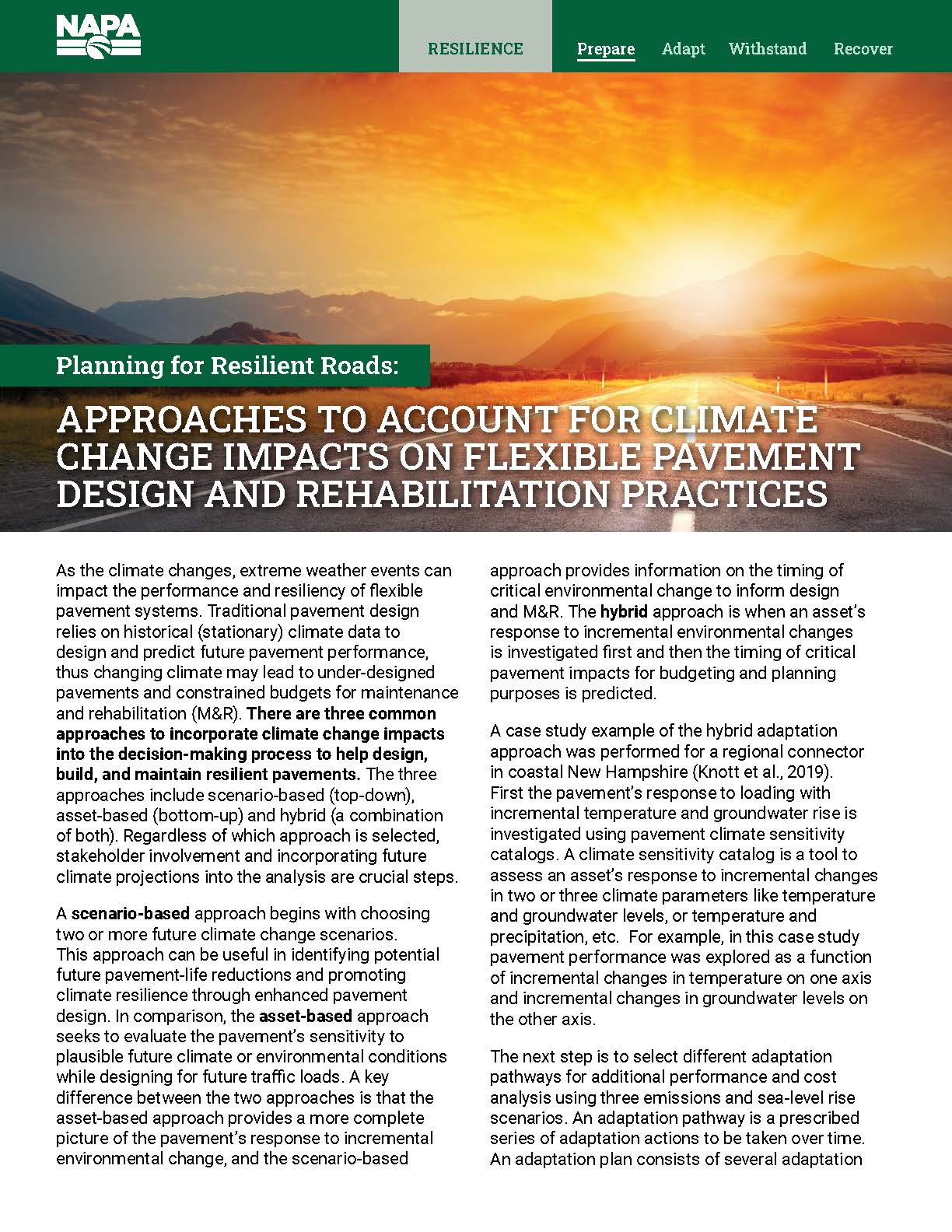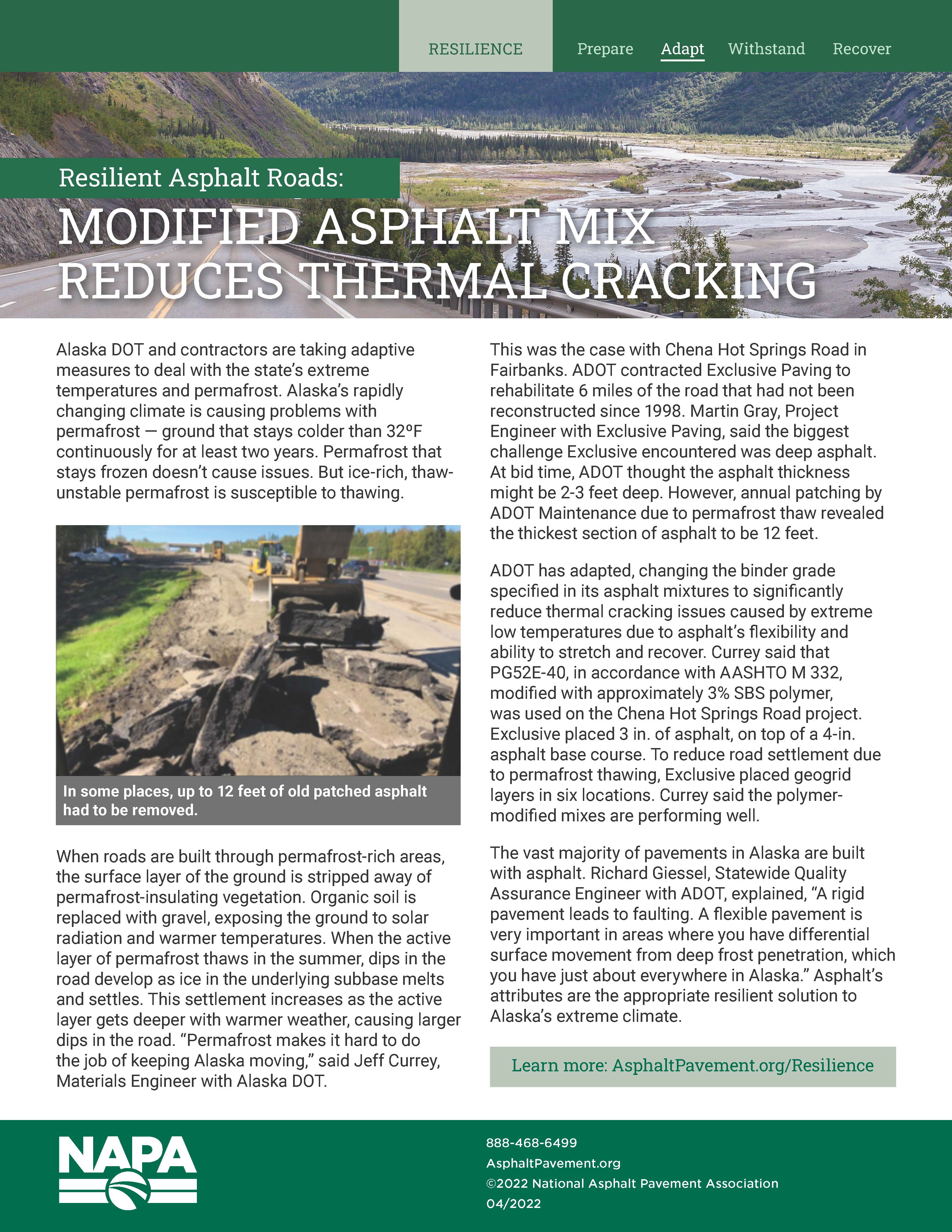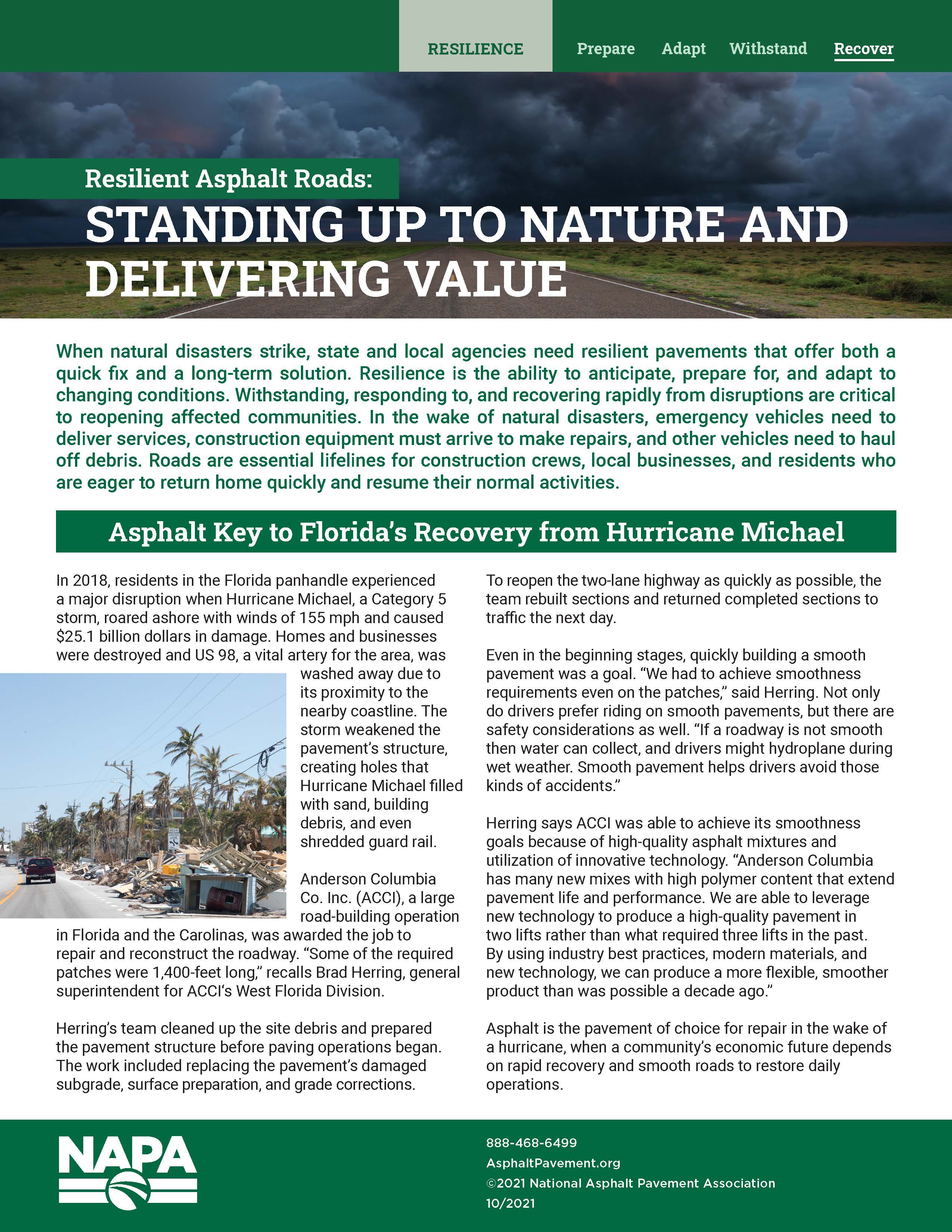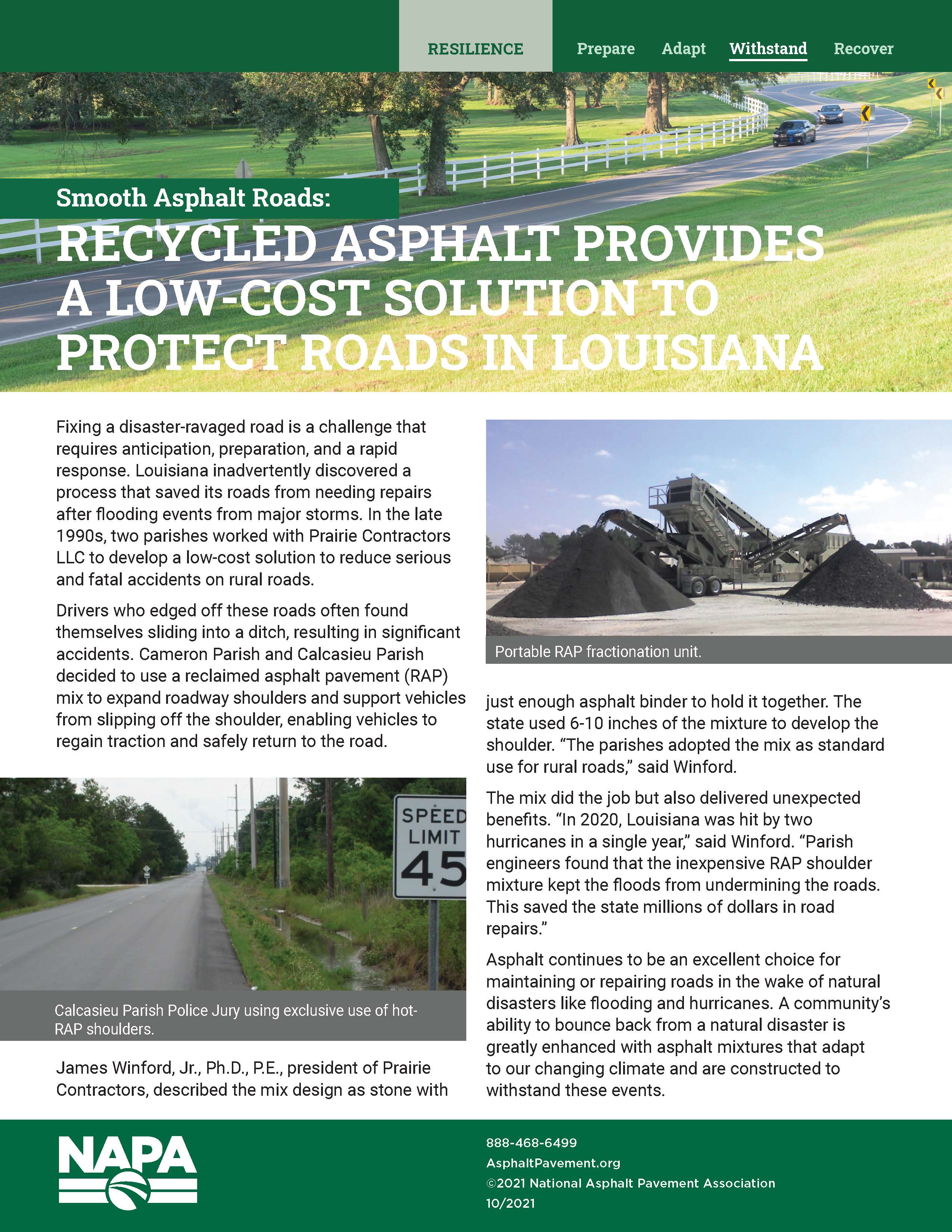
Planning for Resilient Roads: Approaches to Account for Climate Change Impacts on Flexible Pavement Design and Rehabilitation Practices
There are three common approaches to incorporate climate change impacts into the decision-making process to help design, build, and maintain resilient pavements.

Resilient Asphalt Roads: Modified Asphalt Mix Reduces Thermal Cracking
Alaska DOT and contractors are taking adaptive measures to deal with the state’s extreme temperatures and permafrost

Resilient Asphalt Roads
When natural disasters strike, state and local agencies need resilient pavements that offer both a quick fix and a long-term solution. Resilience is the ability to anticipate, prepare for, and adapt to changing conditions. Withstanding, responding to, and recovering rapidly from disruptions are critical to reopening affected communities. In the wake of natural disasters, emergency vehicles need to deliver services, construction equipment must arrive to make repairs, and other vehicles need to haul off debris. Roads are essential lifelines for construction crews, local businesses, and residents who are eager to return home quickly and resume their normal activities.

Smooth Asphalt Roads
Fixing a disaster-ravaged road is a challenge that requires anticipation, preparation, and a rapid response. Louisiana inadvertently discovered a process that saved its roads from needing repairs after flooding events from major storms. In the late 1990s, two parishes worked with Prairie Contractors LLC to develop a low-cost solution to reduce serious and fatal accidents on rural roads.